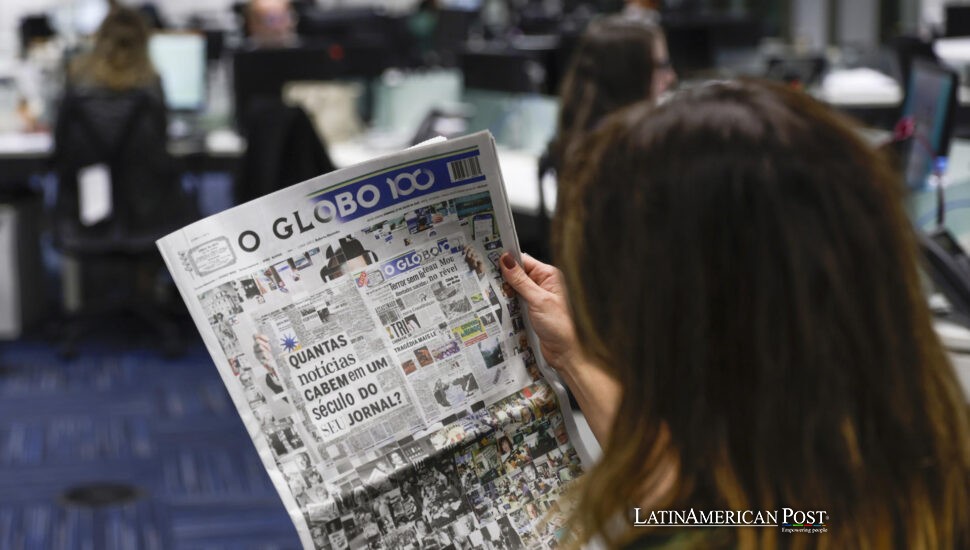Brazilian Giant O Globo’s Centennial Stirs Debate on Power, Press, And Politics

As O Globo marked its 100th anniversary under Rio’s salt-thick sky, Brazilians found themselves celebrating and questioning a media empire that shaped their language, politics, and identity—sometimes as a spotlight, sometimes as the scriptwriter behind the curtain.
Born on the Docks, Built for a Republic
The first issue of O Globo hit the streets of Rio de Janeiro on July 29, 1925, with six tightly packed columns and a headline on Henry Ford’s Amazon ambitions. It was meant to be a small, sharp-eyed paper reflecting a young nation finding its feet. Founder Irineu Marinho saw a rising middle class, a modernizing economy, and a craving for information—he just didn’t live to see it through. A month later, Marinho died suddenly. His replacement, editor Eurycles de Mattos, had to steer a fledgling newsroom in a market already dominated by O Estado de São Paulo.
Survival meant proximity. Reporters lingered at the docks for shipping prices, combed cafés in Lapa for political gossip, and relayed football scores by telegram. That closeness to the rhythms of Rio gave the paper traction, and a new century documentary—produced by the Globo newsroom—recalls how early bundles of the paper traveled beyond the favelas and boulevards, riding rail lines into the sertão.
In 1931, a 26-year-old Roberto Marinho inherited the paper. And with him came a belief that news wouldn’t always live in ink.
“He understood that information had to travel further than the press,” said current chairman João Roberto Marinho in an interview with EFE. Roberto began experimenting with radio coverage and, by 1965, launched TV Globo, planting the seed of what would become one of the most powerful cross-platform media conglomerates in the southern hemisphere.
Building a Media Empire—and a National Identity
When TV Globo aired its first telenovela, only five percent of Brazilian households owned a television. Fifteen years later, Jornal Nacional had become appointment viewing, and Globo’s primetime soap operas stitched together the cultural conversation of a country spanning multiple time zones.
Today, Grupo Globo claims an audience of 50 million monthly readers for the newspaper alone and a global reach in 130 countries through television, print, streaming, and digital platforms. Its legacy is braided into Brazil’s vocabulary. From the grammar of football to the lexicon of impeachment, Brazilians learned to name their reality through headlines and scripts shaped in the company’s studios.
“The secret,” João Roberto told EFE, “has been adapting without abandoning core values—independence, professionalism, innovation.”
That centennial mantra played out across mediums: a documentary series, a visual art exhibit, and the release of A Century in One Hundred Chronicles, an anthology of editorials that once taught a generation how to think critically—and, at times, what to think.
But legacy isn’t neutral. The further O Globo reached, the more questions it invited about who gets to narrate the nation’s story.
The Power—and Price—of the Microphone
Few institutions in Brazil have had such proximity to power—or drawn as much criticism for it.
In 1964, O Globo endorsed the military coup that ushered in a two-decade dictatorship. That endorsement wasn’t retracted until 2013. In the interim, Roberto Marinho stood beside generals while his reporters documented torture. Historian Leonencio Nossa, writing in Globo’s anniversary supplement, described it as “shielding the business while covering the truth.”
Even in the post-dictatorship era, the tension remained. When Tancredo Neves, the first civilian elected president after military rule, warned his inner circle to “never pick a fight with Roberto Marinho,” it wasn’t hyperbole. It was a strategy.
Leftist politicians have long claimed Globo shaped political outcomes. In 1989, many accused the network of manipulating debate footage to tilt sentiment away from a little-known labor leader named Luiz Inácio Lula da Silva. Lula would later win in 2002, but his presidency was dogged by friction with Globo, a dynamic that intensified under Dilma Rousseff and exploded during the Operation Car Wash corruption probe. Saturation coverage preceded Lula’s imprisonment, and critics claimed bias.
Globo has always denied playing favorites. Managing editor Alan Gripp told EFE that editorial decisions are driven by reporting, not politics. “Yes, we have conservative roots,” he admitted, “but we’ve held every administration to account.”

Redefining the Front Page in a Fragmented Age
Now, as it crosses into its second century, O Globo is facing a media landscape more fractured—and less forgiving—than ever.
Smartphones have outpaced broadsheets. WhatsApp chains outpace front pages. Print readership has dropped by half since 2015. And influencers now compete with anchors for attention and credibility.
The response? Merge the old with the new. O Globo has consolidated its newsrooms and leaned into digital storytelling—podcasts on court rulings, TikTok explainers on VAR controversies, and a data desk that open-sources investigations into Amazon deforestation. More than half of its readers now come through mobile, and digital subscriptions have outstripped physical circulation.
But influence still breeds unease. When one editorial voice dominates TV, radio, and the web, dissenting narratives can be drowned out—even inadvertently. Critics warn that such dominance can replicate the very echo chambers it claims to challenge.
João Roberto concedes the tension. “The antidote to concentration is transparency,” he told EFE. Not retrenchment, not silence, but visible accountability—an open ombudsman column, reader correction features, and reproducible investigative methodologies.
Whether that’s enough in an age of weaponized misinformation remains to be seen. But the goal, he insists, is not to chase clicks, but credibility.
As fireworks burst over Guanabara Bay, O Globo’s hundredth birthday wasn’t just a milestone—it was a mirror. A reminder of a media institution that has done more than chronicle Brazil’s past. It has helped define it.
Also Read: Costa Rica’s Intel Exodus and the Fight to Save Its Silicon Dreams
But now, the pen no longer writes alone. Brazil speaks back—on WhatsApp, on Twitter, on livestreams, and comment threads. The question isn’t whether O Globo still matters. It does. The question is how it will choose to matter in a century where power is conversational, trust is earned in real time, and no narrative goes unchallenged for long.




